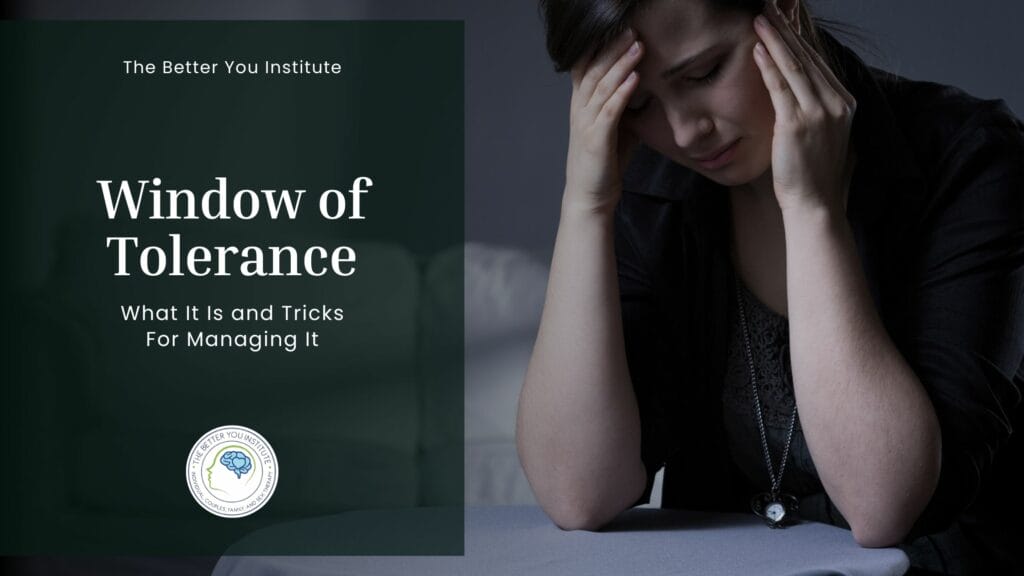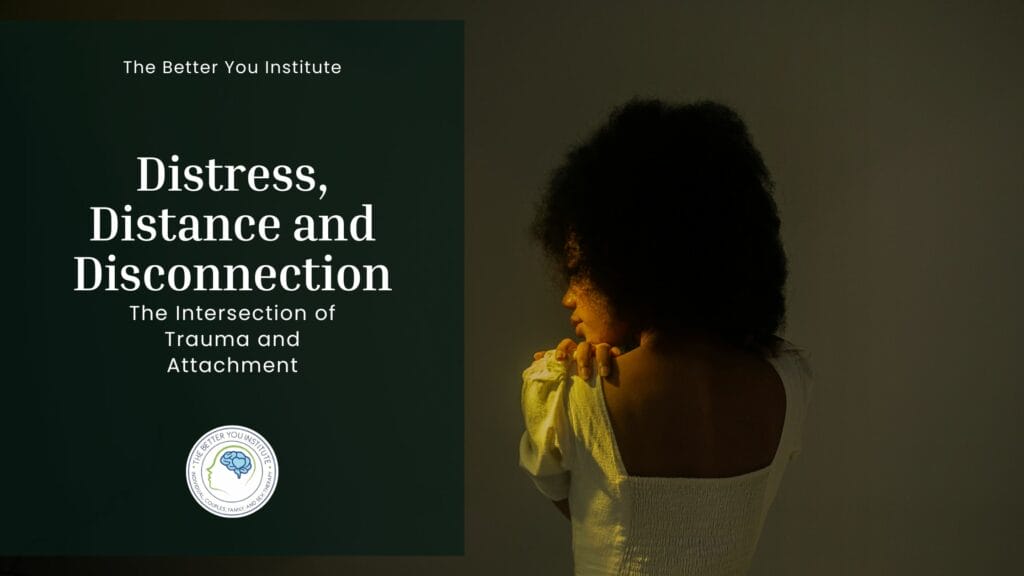You probably enjoy conversations more when someone is talking with you rather than talking at you. You feel more open and less defensive in these types of conversations. You don’t feel the need to fight back or get louder in the conversation. In the same vein, when you learn to be with, instead of battle with, your anxiety, your anxiety doesn’t get bigger or louder. Instead, your anxiety tends to subside. You then feel less taken over by it and more in the driver seat of your day-to-day interactions. This article will explore ways to create a different relationship with your anxiety while also helping you gain effective coping skills to decrease anxiety.
Table of Contents
The anxious thoughts or voices in our head
All too often our anxious thoughts, sometimes referred to as the anxious voices, stay well past their welcome. These thoughts plant themselves in our head and cause many of us to, bluntly put it, freak out. These thoughts can be loud, imposing, critical, blaming, catastrophizing (making the worst-case scenario seem possible), spiraling, and very annoying. Anxious thoughts appear in the most unwanted places and worst times. It’s important to begin to recognize and understand when and where these thoughts are coming from, the impact they have, and how you interact with these thoughts. The more you feed the anxiety, usually the bigger and louder it will get.
“I’m going to mess this up again.”
“It’s never going to work for me.”
“You’re going to fail.”
“You don’t know what you’re doing.”
“Ha! You really think that’s going to work?”
“You’re not good enough.”
“They’re lying to you, they don’t think your dress looks nice.”
“He’s going to cheat. They always do.”
“They’re laughing at you.”
Sound familiar? Let’s explore how to change befriend our anxious voices and the way you cope.
Befriend Your Anxiety vs. Fighting
What usually happens when you try not to think of something? Most of us tend to think of that thing even more. We become more frustrated that we are doing exactly what we don’t want to do. We follow the same pattern when we try to fight our anxiety. We stay stuck with the negative thoughts buzzing in our head, possibly even louder than before. The anxious thought hits us, so we yell back. Now we’re in a match, butting heads, and likely not going anywhere productive with our anxiety. When we fight the anxiety, we only fuel it more. Fighting with our anxiety is not where we want to be, yet many of us don’t know another way to face the thoughts. Another way is possible, though, which comes in the form of befriending.
Imagine the anxious voice bickering with you in your head but you’ve learned to befriend this voice. You speak to your anxiety in the same way you would talk to a dear friend or family member. Instead of screaming louder at you, the voices quiet down or dissipate.
Try these forms of befriending your anxiety:
- Instead of saying, “go away, get lost, shut up,” you say, “I don’t love that you’re here but let’s figure this out.”
- You are being true to yourself by stating you’re not in love with the fact that your anxiety is peaking it’s head.
- You are also trying to work with the anxiety instead of against the anxiety.
- “I want you to go away but I see that you’re trying to tell me something. What do you want me to know?”
- Again, you are tuning into your needs of wanting the anxiety gone.
- You are acknowledging the anxious thoughts could be useful or there for a reason.
- “I hear you. Right now you think it would be more beneficial if I do X instead of Y.”
- You are acknowledging the anxiety (as opposed to avoiding it).
- You are taking into consideration the anxiety is there for a reason, that it might have some value.
- *Before you shift what you are doing based on your anxious thoughts, ask yourself if the anxious thought is truly going to be helpful to you in reaching your long-term goals or if it is trying to help you feel comfortable in the moment but goes against your goals.
- Example: Your goal is to meet someone who could become a life partner. You have social anxiety. Each time you get ready to go to a social event where there is potential for meeting new people, possibly a mate, your anxiety spikes and tells you not to go to the event.
- In this example, your anxiety is keeping you comfortable in the here-and-now but is hindering your ability to reach your long-term goal. In this case, you might acknowledge the discomfort and thank your anxiety for trying to protect you but then reassure it that you will be okay.
Viewing your anxiety differently
In befriending our anxiety we can also learn to view it differently so it does not hold as much weight, control, or negativity over us. Since you now know how to recognize the anxious thoughts, and how to speak to the anxiety differently, here are some ways you can view and cope with it.
Externalizing Your Anxiety
Picture your anxiety sitting next to you, recognizing that it is separate from you rather than a part of you. In other words, anxiety is something that comes and goes and happens to you, it is not your identity. You are not an anxious person, you experience anxiety sometimes. Thinking about anxiety in this way can help take off some of the heaviness anxiety holds over us.
Name your anxiety
- For some people, just labeling your thoughts as anxious thoughts is helpful. Labeling them can make them feel less cryptic.
- For others, giving your anxious thought a persona with a name is beneficial. For example, the voice telling you not to go the social event where you could meet your mate is Bertha. Bertha means well but sometimes doesn’t always get it right with her guidance.
- Another label that may be helpful to use for your anxiety is pinpointing the age at which it developed. The anxiety that wants to protect you from social events is your 6 years old self stuck at the birthday party where everyone was making fun of you because your sleeping bag didn’t have fun Disney characters like theirs did.
Use imagery
- If you view anxiety as a big monster you can now view it as a less frightening one, maybe like Sully from Monsters Inc.
- Imagine the anxiety as a ball getting smaller or a color getting dimmer
- Picture putting your anxiety or anxious thoughts in a radio and turning down or muting the volume
- The goal is to put you in control and feel less intense or controlling
Stick to the idea of befriending the anxiety. View it as a friend who is doing annoying things because they need to be heard, validated, or acknowleged.
Your new anxious voice
Now that you have multiple ways to speak to, view, and understand your anxiety you can begin to practice these new skills or talks daily. If anxiety has been a part of your life for a long time, be patient with yourself while you begin to befriend and cultivate a new relationship with it. Remember, you are not your thoughts or your anxiety, you are experiencing them. That means you get to choose how you want to spend your time sitting with and viewing what happens to and within these experiences. When you choose kindness, compassion, and understanding you help increase and instill more kind, compassionate, and understanding thoughts into your life. While anxiety is not always pleasant or warranted, many times it’s protecting or reminding us of something, and by befriending the anxiety you can choose to decrease the unpleasantness and messiness that it can sometimes create. You get to start using your new anxiety voice.
Practices to begin using:
- Noticing how you talk to your anxiety and work on reframing or viewing it from a more supportive, kind, or rational place. It may help to use an Anxiety Tracking Log.
- Have daily check ins with yourself of how you did in fact befriend or struggle with befriending your anxiety. Celebrate the wins.
- Write down the techniques discussed throughout the article that really work for you and share how and why they did so you have good examples to remind yourself of or as a go-to when needed
- Write a list of anxiety befriending statements you want to use to challenge your anxiety (you can even make copies of this list to put in your wallet or have with you to use in times of need or reassurance)
- Join a support group to get more feedback and have an outlet to share your positives or challenges with managing anxiety
If you’re interested in learning more about befriending your anxiety and learning new coping skills to decrease anxiety feel free to schedule an appointment at The Better You Institute with one of our Philadelphia therapists. Call us today, 267-495-4951 to set up your appointment.
Meet The Author:

Caitlin Siekerka
Licensed Professional Counselor
Caitlin Siekerka, LPC, a Licensed Professional Counselor in Pennsylvania and New Jersey, is dedicated to guiding individuals on their path to finding meaning and purpose. She uses a compassionate, empathetic approach in therapy, helping clients achieve balance and develop coping skills. Specializing in depression, anxiety, self-esteem issues, bipolar disorder, grief, trauma, life transitions, and substance use, Caitlin offers personalized therapy using techniques like CBT, DBT, and mindfulness. An LGBTQ+ ally, she creates a safe space for growth and exploration in Philadelphia. Caitlin holds a master’s in Counseling Psychology from Rosemont College, continually educating herself to provide the best support.
Learn more about Caitlin Siekerka ⇒







